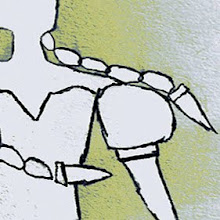HMS Beagle in the Galapagos Islands painting by John Chancellor
On the second voyage of the HMS Beagle the young naturalist Charles Darwin was on board, and his work would eventually make Beagle one of the most famous ships in history.
Charles Darwin in 1881
Charles Darwin (1809 – 1882) was a British scientist who laid the foundations of the theory of evolution and transformed the way we think about the natural world.
Cactus finches by Elizabeth Gould (from Charles Darwin – The Zoology of the Voyage of the HMS Beagle, 1839-43)
« Darwin's finches are the emblems of evolution. The birds he saw on the Galapagos Islands during his famous voyage in 1831-1836 changed his thinking about the origin of new species and, eventually, that of the world's biologists.
Darwin wondered about the changes in shape of bird beaks from island to island.» (William Cromie)
Darwin's drawing
Darwin studied the wildlife on the Galapagos Islands, a group of islands on the equator, almost 1,000 kilometers west of Ecuador. He noticed that the finches on the different islands there were fundamentally similar to each other, but showed wide variations in their size, beaks and claws from island to island. For example, their beaks were different depending on the local food source.
Darwin concluded that, because the islands are so distant from the mainland, the finches that had arrived there in the past had changed over time. (Source)
( R ) evolution.
Drawing of 14 species of Galapagos finches by ornithologist David Lack
Darwin and the finches by Kayla Skogh
Darwin's finches by Jada Fitch
Darwin by Jenny Parks
Darwin's finches by Charley Harper
Darwin's finches by Diana Sudyka
Darwin with the finches by Joanna Barnum
Museum of Life - Darwin's finches
Darwin's mockingbirds by H. Douglas Pratt
Darwin and the finches by Kayla Skogh
Darwin's finches by Jada Fitch
Darwin by Jenny Parks
Darwin's finches by Charley Harper
Darwin's finches by Diana Sudyka
Darwin with the finches by Joanna Barnum
Museum of Life - Darwin's finches
Darwin's mockingbirds by H. Douglas Pratt













